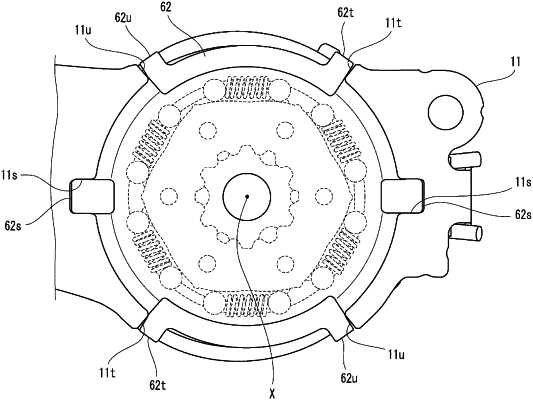| CPC F16D 67/02 (2013.01) [B60N 2/165 (2013.01)] | 4 Claims |

|
1. A clutch unit for use in a vehicle seat, the clutch unit comprising:
an operation lever that is rotatable about a rotation axis;
an output shaft member that is rotatable about the rotation axis and outputs, to the vehicle seat, an operation force applied to the operation lever;
an input-side clutch that is driven by the operation lever and transmits rotation of the operation lever to the output shaft member;
an output-side clutch that transmits a rotational torque of the input-side clutch to the output shaft member and limits transmission of a rotational torque from the output shaft member to the input-side clutch; and
a housing that accommodates at least the output-side clutch
wherein the output-side clutch includes:
an output-side inner ring member that rotates integrally with the output shaft member about the rotation axis;
an output-side outer ring member that is attached to the housing; and
an output-side intermediate transmission member that is rotatably provided between the output-side inner ring member and the output-side outer ring member, and transmits a rotational torque of the output-side inner ring member to the output-side outer ring member,
wherein the output-side outer ring member and the housing have engagement structures that engage with each other to restrict relative rotation therebetween,
wherein the engagement structures include an engagement protrusion and an auxiliary engagement protrusion each extending outward in a radial direction of the rotation axis from an outer peripheral portion of the output-side outer ring member,
wherein the auxiliary engagement protrusion has a smaller protrusion amount in the radial direction of the rotation axis than that of the engagement protrusion,
wherein the engagement structures include an engagement groove formed in the housing and to be engaged with the engagement protrusion,
wherein the housing has an auxiliary engagement groove engageable with the auxiliary engagement protrusion, and
wherein the auxiliary engagement protrusion and the auxiliary engagement groove face each other with a gap therebetween in a circumferential direction of the rotation axis.
|